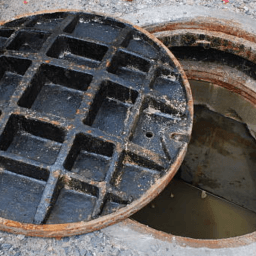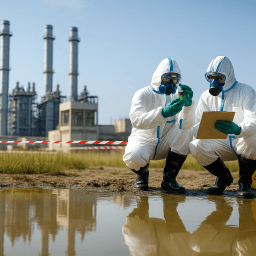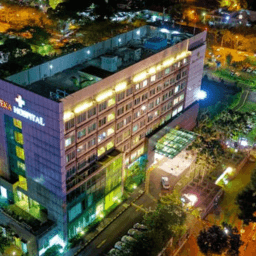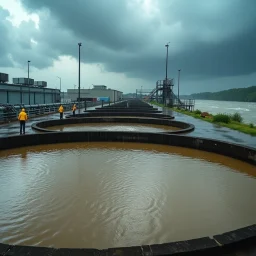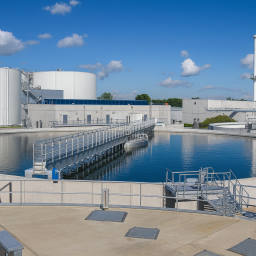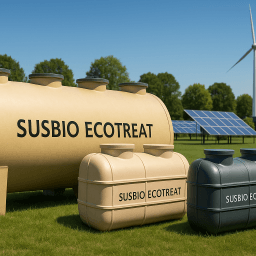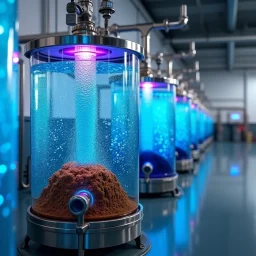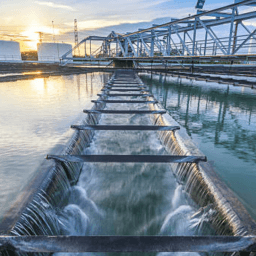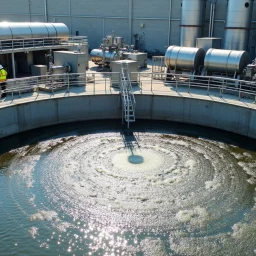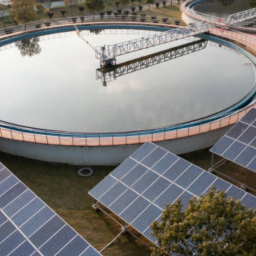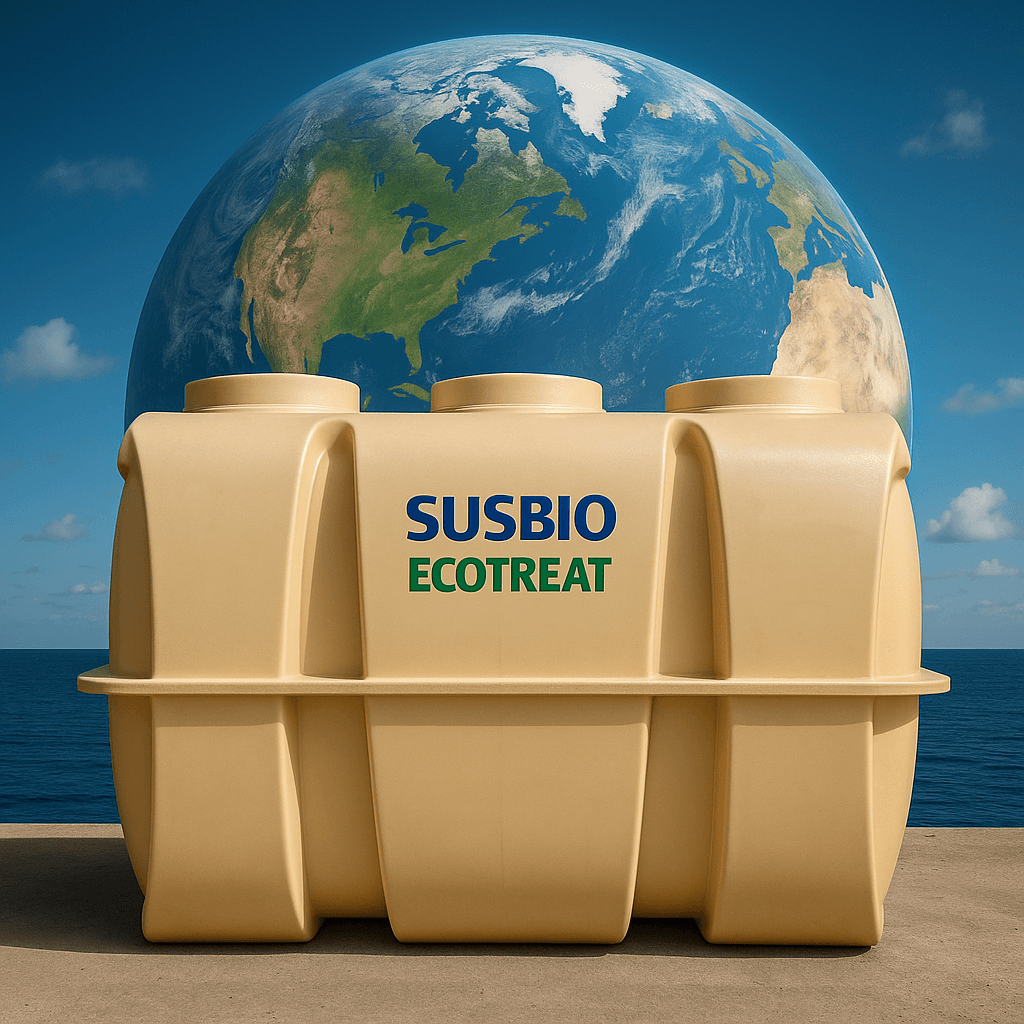
MBBR sewage treatment plant technology reshaped wastewater management after Professor Hallvard Ødegaard invented it at the Norwegian University of Science and Technology in the late 1980s. This innovative approach delivers excellent treatment results and uses nowhere near as much energy as traditional systems.
MBBR (Moving Bed Biofilm Reactor) technology offers a versatile solution for sewage treatment plants. The process works through an activated sludge aeration system where specialized bacteria make their home on recycled plastic carriers. The design creates concentrated biomass that fits in less space than conventional activated sludge systems. The technology also maintains anoxic and aerobic conditions in the same tank, which enables carbon removal, biological phosphorus removal, and nitrification/denitrification at once.
This piece will get into why engineers now prefer MBBR systems over traditional wastewater treatment methods. We’ll look at their operational advantages, performance benefits, design flexibility, and affordable solutions.
What Makes MBBR Technology Unique in STP Design
The design of an MBBR sewage treatment plant shows a transformation in how we treat wastewater. This system combines everything in multiple treatment approaches into one quick process. Let me show you what makes this technology different from regular systems.
MBBR STP Full Form and Basic Principle

Moving Bed Biofilm Reactor (MBBR) in Sewage Treatment Plants uses a simple yet powerful biological process. Professor Hallvard Ødegaard at the Norwegian University of Science and Technology developed this technology in the late 1980s. Today, it’s the life-blood of modern wastewater management.
MBBR works on a simple principle. Specially designed plastic carriers float freely in aeration tanks. These carriers are made from high-density polyethylene (HDPE) because of its plasticity, density, and durability. They provide a huge surface area where biofilm can form. The treatment happens as wastewater flows through the tank while these biofilm-covered carriers keep moving.
The real magic happens in the biofilm – a thin layer of microorganisms that stick to the carrier media and create their own ecosystem. These microorganisms eat organic matter, nitrogen, and other pollutants. They break these down into simpler, harmless compounds. The carriers’ constant movement ensures that wastewater and biomass mix well together.
MBBR doesn’t need sludge recycling – unlike activated sludge systems. This feature alone makes it a major step forward in sewage treatment plant design.
Biofilm-Based Treatment vs Suspended Growth Systems
MBBR is unique compared to traditional suspended growth systems. Regular activated sludge processes let microorganisms float freely in wastewater. These form biological flocs that need settling and recycling. MBBR takes a different approach – microorganisms grow on fixed media.
This difference creates several advantages. Suspended-growth technologies often struggle with varying waste streams. Their microorganisms “cannibalize” each other when food supply changes. But attached-growth systems like MBBR adapt to available food sources – just like humans adjust to eating less.
The biofilm-based process handles shock loads and toxic inflows better. Microorganisms in the protected biofilm environment can survive stresses that would kill suspended growth systems.
Biomass concentration is another key difference. MBBR’s biofilm carriers provide a massive protected surface area. This allows more active bacteria than conventional systems. More bacteria means better treatment – doing more biological work in less space.
MBBR combines the best of suspended growth and attached growth systems. This integrated approach keeps working steadily even when wastewater conditions change. The biofilm structure also removes nutrients better. It can perform nitrification and denitrification at the same time, without needing separate tanks.
MBBR technology needs less space, runs more simply, and treats water more reliably than traditional systems. These benefits are why engineers increasingly choose this innovative solution.
Operational Simplicity and Maintenance Advantages

Engineers choose MBBR sewage treatment plants because they are simple to operate and need little maintenance. These benefits lead to lower costs and better performance throughout the system’s life.
No Backwashing or Sludge Recirculation Needed
Traditional wastewater systems need complex sludge recycling processes that require constant monitoring. MBBR sewage treatment plants are different. They work continuously without backwashing or return sludge flows. This makes the treatment process much simpler.
The biofilm-based approach makes this possible. Unlike regular activated sludge systems that use suspended growth, MBBR technology lets excess biomass naturally fall from the carriers to the clarifier. You won’t need to recycle sludge or buy special equipment for sludge return.
This simpler process uses less energy and has fewer parts that could fail. Engineers like this because it creates a reliable treatment solution with fewer problems.
Self-regulating Biofilm Thickness
MBBR technology’s most innovative feature is how it regulates itself. The biofilm grows and detaches naturally because of mixing and aeration forces. This keeps the biofilm thickness steady. Operators don’t need to adjust the food to microorganism ratio (F/M) manually.
Special plastic carriers move around the tank and get equal exposure to wastewater and oxygen. This movement creates perfect conditions for healthy microbes without constant oversight. As old biofilm falls off, new growth takes its place in a continuous cycle.
The system stays balanced with about 20 g/m² of biofilm on carrier surfaces at 70% filling degree. This creates roughly 7 g/L sludge content for carriers with 500 m²/m³ surface area. The system maintains this balance naturally.
Minimal Manual Intervention Required
MBBR systems are reliable and need less labor. Modern installations often use remote monitoring and automation. You can operate them from anywhere using mobile devices. These automatic systems rarely need human intervention or onsite operators.
The constant movement of carrier elements prevents clogging that would need manual cleaning. The biofilm also handles toxic shocks and changing wastewater conditions well, which means fewer emergencies and system adjustments.
Facility managers benefit from needing fewer workers, having less equipment breakdowns, and facing fewer disruptions. While skilled staff still need to monitor pumps and blowers, these systems need much less maintenance than traditional ones.
MBBR technology offers these key benefits – no backwashing, self-regulating biofilm, and minimal manual work. That’s why engineers looking for reliable sewage treatment solutions often choose this technology.
Performance Benefits Over Traditional Systems
Engineers choose MBBR sewage treatment plants because they outperform conventional systems. These plants excel beyond simple operations and deliver better treatment efficiency, stability, and energy consumption.
Higher Biomass Retention and SRT Efficiency
MBBR’s carrier-based design revolutionizes biomass management. The specialized carriers create extensive surface area for biofilm growth, which helps these systems maintain biomass concentrations that are nowhere near what conventional activated sludge processes can achieve. Carriers with a 500 m²/m³ surface area reach sludge content of about 7 g/L at a 70% filling degree with an average biofilm of 20 g/m². This concentrated biomass boosts treatment capacity.
The technology’s real strength lies in separating sludge retention time (SRT) from hydraulic retention time (HRT). This creates better sludge age, which leads to enhanced performance and helps specialized biomass break down persistent substances. The longer SRT (15-50 days) gives slow-growing nitrifying bacteria enough time to establish and complete nitrification processes. The system delivers exceptional treatment efficiency even with shorter hydraulic retention times.
Stable Effluent Quality Under Load Variations
MBBR technology’s remarkable stability under tough conditions makes it a top choice among engineers. The biofilm-based process keeps performing consistently despite changing influent characteristics – a common challenge in wastewater treatment. The biofilm creates a protected environment for microorganisms that helps them survive environmental stressors that would destroy suspended growth systems.
Lab studies comparing MBBR and Conventional Activated Sludge (CAS) systems prove this advantage. MBBR systems achieved removal rates that were a big deal as they meant: 85% COD removal (versus 53% in CAS), 75% ammonia nitrogen removal (versus 53% in CAS), and 80% TSS removal (versus 69% in CAS). These results show how well the system treats water even as conditions change.
Energy Efficiency in Aeration and Mixing
MBBR systems optimize energy through smart aeration and mixing processes. Traditional systems need dispersed air for both aeration and mixing, but MBBR technology lets you optimize these functions separately. Well-designed MBBR installations use less energy for aeration in aerobic processes than conventional activated sludge systems.
Precise aeration control is the key. The right aeration intensity saves energy while maintaining performance, as using more air doesn’t automatically mean better treatment. Smart aeration modes can improve mixing in aeration tanks without using extra energy.
This smart energy management delivers consistent results while using less power. That’s why MBBR technology appeals to engineers planning new installations or upgrades in today’s energy-conscious world.
Design Flexibility and Scalability of MBBR STP
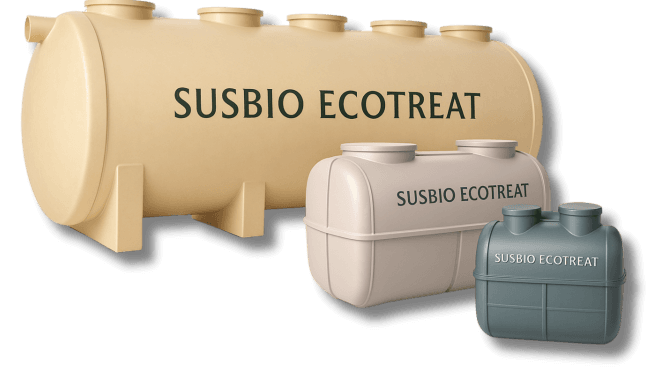
MBBR sewage treatment plants offer engineers exceptional design advantages through their structural versatility. These benefits extend beyond conventional systems and show up throughout the implementation process, from the original installation to future expansion.
Modular Expansion by Increasing Carrier Volume
MBBR technology stands out for its scalability through modular design. Existing MBBR systems can expand by adding more biofilm carriers or tanks when treatment needs increase. This simple approach to capacity improvement needs minimal downtime and won’t get pricey like system overhauls.
These systems can adjust treatment capacity smoothly without disrupting the process. A facility that sees seasonal production changes can scale up during busy times by adding carriers. This strategy will give a wastewater treatment system room to grow with the business while keeping treatment efficient.
Adaptability to Variable Influent Loads
MBBR sewage treatment plants shine at handling fluctuating loads. The biomass adjusts naturally to changing conditions. The system withstands sudden organic load spikes while maintaining treatment efficiency.
This resilience makes MBBR technology perfect for:
- Industrial facilities with variable production volumes
- Growing municipalities with changing wastewater characteristics
- Seasonal operations that see major flow variations
Biofilm-based processes deliver consistent performance in challenging conditions. Microorganisms on carrier media stay highly concentrated and active. They quickly adapt to wastewater composition changes. The system stays stable whatever the influent variations.
Compact Design for Space-Constrained Sites
MBBR technology’s most impressive physical advantage lies in its small footprint. MBBR needs up to 70% less space than traditional activated sludge or trickling filter systems while achieving better treatment results. An MBBR tank treats the same wastewater volume as conventional systems in just one-quarter the size.
High biomass concentration on biofilm carriers creates this space efficiency, allowing effective treatment in smaller tanks. MBBR systems prove especially valuable for:
- Urban installations with limited land availability
- Updating existing facilities without major construction
- Space-constrained industrial sites needing treatment upgrades
MBBR technology delivers full-scale treatment capabilities in tight spaces without compromising performance. Engineers facing both physical constraints and treatment requirements increasingly choose this solution.
Cost and Environmental Impact Considerations
MBBR sewage treatment plants offer compelling economic advantages that drive engineering decisions. These systems revolutionize wastewater management by delivering measurable financial and environmental benefits.
Lower Capital and Operating Costs
MBBR technology proves more cost-effective than conventional systems. The process needs simpler infrastructure without sludge recycling components, which cuts down original capital costs. Research comparing hybrid MBBR-MBR systems with Conventional Activated Sludge (CAS) treatment revealed an interesting fact: while MBBR-MBR needed extra capital for carriers and membranes, it cost less than half to operate compared to CAS – 0.61 €/m³ versus 1.41 €/m³.
The simpler operation leads to maintenance savings. Research shows MBBR/IFAS systems cost less to build and run than membrane bioreactor systems. They’re also a great way to upgrade conventional activated sludge plants. Engineers calculate the Net Present Value (NPV) and Internal Rate of Return (IRR) before investing, and studies show MBBR systems achieve an impressive 18% IRR.
Reduced Sludge Handling and Disposal
MBBR systems produce much less sludge than traditional processes. We achieved this reduction because MBBR works with extended sludge retention times (SRT). This means lower disposal costs and less waste to manage.
Some MBBR configurations can eliminate entire sludge treatment lines, creating remarkable savings:
- No gravity thickener or aerobic digester (10 USD per m³/day)
- No excess sludge pumping (6 USD per m³/day)
- No centrifuge or polymer dosing systems (30 USD per m³/day)
- No odor removal systems (20 USD per m³/day)
Eco-friendly and Low Carbon Footprint
MBBR technology stands out for environmental sustainability. Energy use remains crucial in wastewater treatment, and studies suggest it accounts for about 69% of greenhouse gas emissions in simple treatment plants.
MBBR sewage treatment plants’ ecological profile benefits from efficient operation. Research shows these systems generate less N₂O than suspended-growth systems. On top of that, life cycle analysis reveals MBBR/IFAS has a smaller environmental impact than conventional systems because it uses less electricity and produces fewer air emissions.
Carbon footprint measurements tell a compelling story. Rotating MBBR systems average 0.39 kg CO₂eq/day/m³, which is nowhere near the 1.03 kg CO₂eq/day/m³ from comparable systems. This better environmental performance and economic advantage explains why engineers now choose MBBR technology for modern sewage treatment projects.
Conclusion
MBBR sewage treatment plants are a breakthrough in wastewater management technology. This piece shows why engineers now prefer these systems over older alternatives. The results show that MBBR technology’s advantages work in many different ways.
The biggest advantage is how simple MBBR systems are to operate. They don’t need complex processes like backwashing or sludge recirculation. The biofilm thickness regulates itself and needs much less maintenance. These systems keep more biomass, which helps them treat water better even in tough conditions.
Space-constrained sites benefit greatly from MBBR’s compact design without losing any performance. Adding more carriers makes it easy to expand these facilities – something traditional systems just can’t do.
MBBR systems make financial sense too. They cost less to build and run, and they produce less sludge. This means big savings over the system’s lifetime. The original investment might be higher than conventional systems, but the long-term benefits usually make up for it.
The environmental benefits of MBBR technology are a big deal as it means that these systems leave a smaller carbon footprint. They use less energy and are more eco-friendly overall. These features become more attractive as sustainability shapes engineering choices.
Without doubt, MBBR technology will transform wastewater treatment’s future. Municipalities and industries face tougher regulations, changing loads, and limited space. MBBR offers the complete package – great performance, flexibility, and affordable solutions. More engineers are discovering these complete advantages over traditional methods, and this innovative approach keeps gaining ground.
Key Takeaways
MBBR sewage treatment plants offer engineers a superior alternative to traditional systems through innovative biofilm-based technology that delivers exceptional performance with simplified operations.
- MBBR eliminates complex sludge recycling and backwashing processes, reducing operational complexity by up to 70% compared to conventional systems
- Self-regulating biofilm technology maintains stable treatment efficiency even during variable loads without manual intervention or constant monitoring
- Compact modular design requires 70% less space than traditional systems while enabling easy capacity expansion through carrier additions
- Operating costs are significantly lower at 0.61 €/m³ versus 1.41 €/m³ for conventional systems, with reduced energy consumption and maintenance
- Environmental benefits include 62% lower carbon footprint and reduced sludge production, supporting sustainability goals in wastewater management
The combination of operational simplicity, superior performance, design flexibility, and cost-effectiveness makes MBBR technology the preferred choice for modern wastewater treatment applications, particularly in space-constrained environments requiring reliable, efficient treatment solutions.
FAQs
Q1. How does MBBR technology differ from conventional activated sludge systems?
MBBR systems use specialized biofilm carriers that allow for higher biomass concentration in a smaller space. This results in more efficient treatment without the need for sludge recirculation, making MBBR more compact and easier to operate than conventional activated sludge systems.
Q2. What are the main advantages of using MBBR for sewage treatment?
MBBR offers several benefits including operational simplicity, stable performance under varying loads, reduced energy consumption, lower maintenance requirements, and a smaller footprint. It also produces less excess sludge and has a lower carbon footprint compared to traditional systems.
Q3. How does MBBR technology handle fluctuations in wastewater composition?
The biofilm in MBBR systems naturally adapts to changes in wastewater composition, maintaining stable performance even during sudden spikes in organic load. This makes MBBR particularly suitable for facilities with variable influent characteristics or seasonal fluctuations.
Q4. Is MBBR technology cost-effective compared to other treatment methods?
Yes, MBBR technology often proves more cost-effective in the long run. While initial costs may be comparable to conventional systems, MBBR typically has lower operational expenses, reduced energy consumption, and minimal sludge handling costs, resulting in significant savings over the system’s lifetime.
Q5. Can existing wastewater treatment plants be upgraded to MBBR technology?
Absolutely. MBBR’s modular design allows for easy retrofitting of existing facilities. Treatment capacity can be increased by simply adding more biofilm carriers or tanks, often without major construction work. This flexibility makes MBBR an attractive option for upgrading conventional activated sludge plants.


